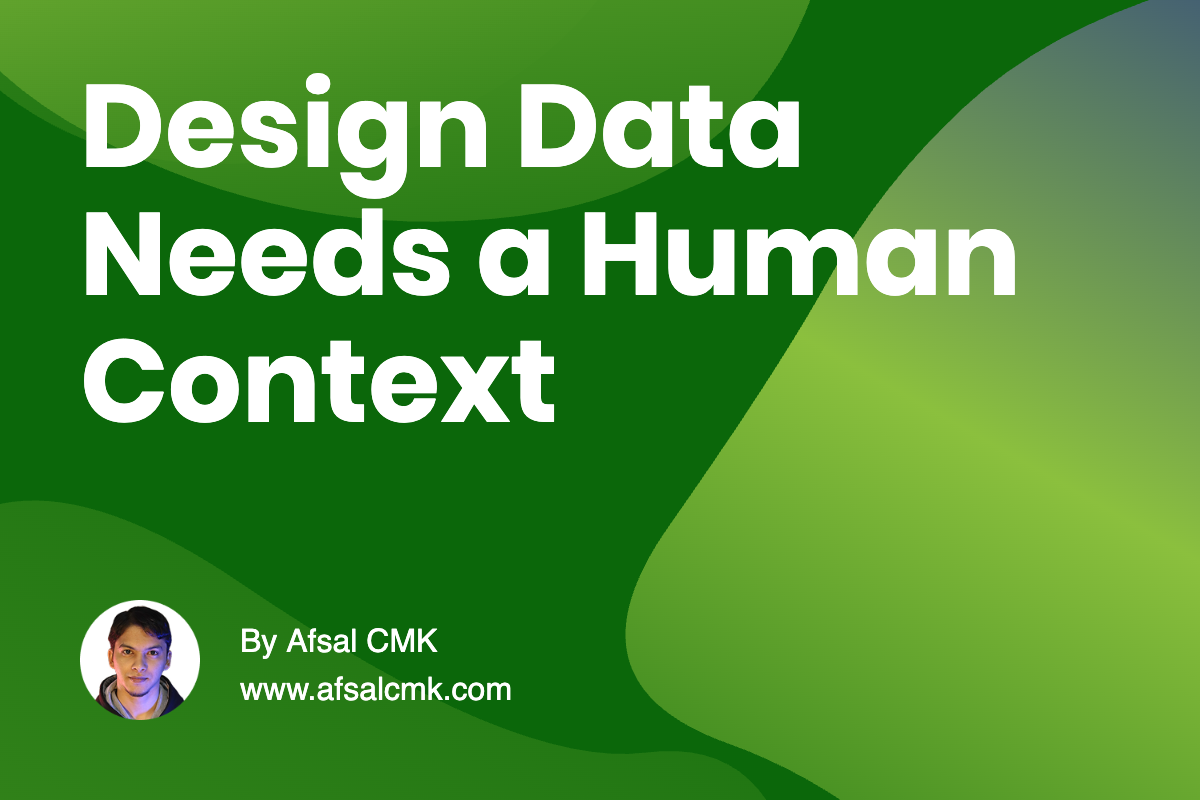
Design Data Needs a Human Context
Not long ago, I built a small tool to observe how users interact with my designs. It tracked basic actions - clicks, scroll depth, hover points, and how long people spent on certain areas. The idea was to visualize behavior in real-time and make data-driven design improvements without waiting for lengthy studies.
At first, the results felt insightful. Seeing bright clusters on a heatmap showing where users clicked the most or how far they scrolled gave a sense of clarity. Patterns emerged that seemed to tell stories - areas of engagement, blind spots, and friction points. The tool quickly became part of internal design reviews and quick usability tests.
But after using it for a while, something started to feel inconsistent. Some areas that looked heavily engaged didn’t seem to correlate with what users actually noticed or cared about in conversations. The mouse trails and clicks were telling one story, but user behavior in context was telling another. That’s when I started to question: how much of this data truly reflects what users think or intend?
The realization came slowly - mouse movement and heatmaps represent attention, not intent. They show where users’ cursors are, not where their minds are. Many times, users rest their mouse somewhere while reading elsewhere. Or they scroll quickly, scanning visually without any clicks, yet fully processing the content. The heatmap might show inactivity, but the user could be deeply engaged. It’s a misleading simplicity - rich visuals that give comfort, but not necessarily truth.
That doesn’t mean heatmaps are useless - far from it. They’re great for spotting patterns, validating interface hierarchy, or identifying overlooked components. They help in comparing before-and-after designs and identifying areas of high friction or abandonment. But relying on them alone can create a false sense of confidence. The real challenge is translating visual data into meaningful design decisions.
To understand what truly happens in the mind of the user, you need to combine these metrics with qualitative insights. Observing user sessions, talking to real customers, or running small usability studies will uncover why users behave the way they do. For instance, a heatmap might show a button rarely clicked, but interviews may reveal users never understood its purpose or didn’t feel confident to proceed. That kind of understanding never shows up in pixel data.
Another interesting insight I noticed while using my internal tool was about the timing of interactions. Time spent on a section didn’t always mean engagement. Sometimes users were confused or stuck. Other times, quick interactions led to high satisfaction. Context was everything, and context was missing from the heatmap view.
Over time, I began using heatmaps more as supporting evidence rather than primary proof. They became conversation starters during design critique - visual hints to explore deeper, not answers in themselves. They helped frame questions like, “Why did users linger here?” or “What’s making them hesitate?” instead of jumping to assumptions about success or failure.
The takeaway is simple but important: design decisions rooted purely in visual analytics can miss the human element. Every user brings emotion, intent, and context that no cursor trail can capture. Heatmaps highlight behavior; research explains motivation.
In practice, combining both worlds - the quantitative and qualitative - creates a much clearer picture. Use heatmaps to identify what’s happening. Then use conversations, tests, and real feedback to understand why it’s happening. When those two perspectives align, that’s when true UX insight emerges.
Data will always show you movement. But meaning only comes from curiosity - asking why that movement exists in the first place.